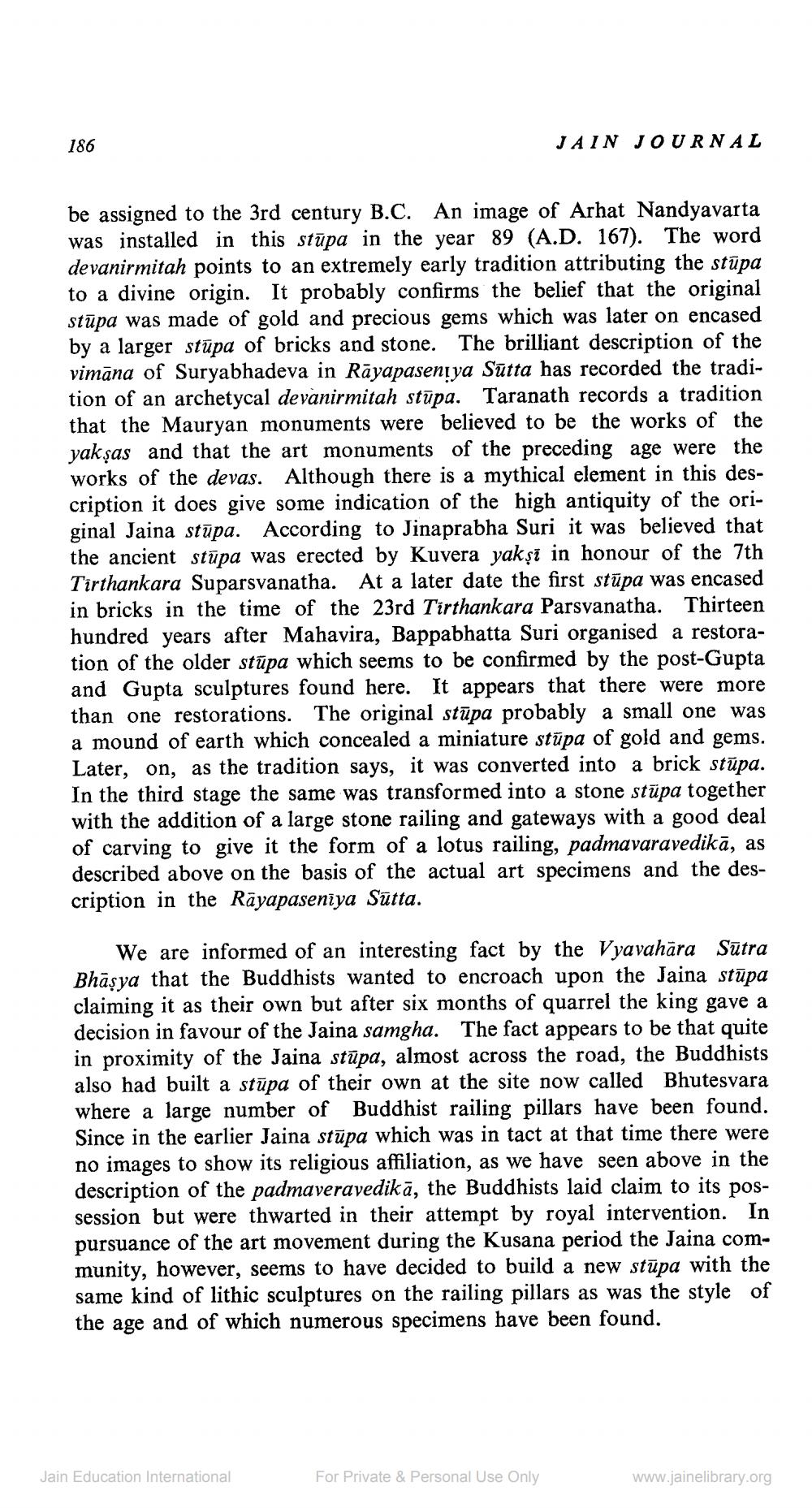________________
186
JAIN JOURNAL
be assigned to the 3rd century B.C. An image of Arhat Nandyavarta was installed in this stūpa in the year 89 (A.D. 167). The word devanirmitah points to an extremely early tradition attributing the stūpa to a divine origin. It probably confirms the belief that the original stūpa was made of gold and precious gems which was later on encased by a larger stupa of bricks and stone. The brilliant description of the vimāna of Suryabhadeva in Rāyapaseniya Sutta has recorded the tradition of an archetycal devanirmitah stūpa. Taranath records a tradition that the Mauryan monuments were believed to be the works of the yakşas and that the art monuments of the preceding age were the works of the devas. Although there is a mythical element in this description it does give some indication of the high antiquity of the original Jaina stūpa. According to Jinaprabha Suri it was believed that the ancient stūpa was erected by Kuvera yakşi in honour of the 7th Tirthankara Suparsvanatha. At a later date the first stūpa was encased in bricks in the time of the 23rd Tirthankara Parsvanatha. Thirteen hundred years after Mahavira, Bappabhatta Suri organised a restoration of the older stūpa which seems to be confirmed by the post-Gupta and Gupta sculptures found here. It appears that there were more than one restorations. The original stūpa probably a small one was a mound of earth which concealed a miniature stūpa of gold and gems. Later, on, as the tradition says, it was converted into a brick stūpa. In the third stage the same was transformed into a stone stūpa together with the addition of a large stone railing and gateways with a good deal of carving to give it the form of a lotus railing, padmavaravedikā, as described above on the basis of the actual art specimens and the description in the Rāyapaseniya Sutta.
We are informed of an interesting fact by the Vyavahāra Sūtra Bhāşya that the Buddhists wanted to encroach upon the Jaina stūpa claiming it as their own but after six months of quarrel the king gave a decision in favour of the Jaina samgha. The fact appears to be that quite in proximity of the Jaina stūpa, almost across the road, the Buddhists also had built a stūpa of their own at the site now called Bhutesvara where a large number of Buddhist railing pillars have been found. Since in the earlier Jaina stūpa which was in tact at that time there were
o show its religious affiliation, as we have seen above in the description of the padmaveravedikā, the Buddhists laid claim to its possession but were thwarted in their attempt by royal intervention. In pursuance of the art movement during the Kusana period the Jaina community, however, seems to have decided to build a new stūpa with the same kind of lithic sculptures on the railing pillars as was the style of the age and of which numerous specimens have been found.
Jain Education International
For Private & Personal Use Only
www.jainelibrary.org




